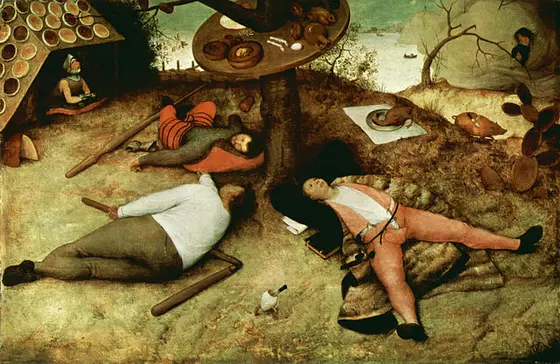We all know that it is unhealthy to spend one’s life as an overweight “couch potato" in front of the TV, drinking beer and smoking cigarettes. Scientists from the German Cancer Research Center (Deutsches Krebsforschungszentrum, DKFZ) have now precisely quantified the harmful effects of this unhealthy lifestyle.
DKFZ epidemiologists in the group of Prof. Rudolf Kaaks have calculated the number of years by which each lifestyle risk factor reduces the average life expectancy of a person who is now 40 years of age. Additionally, they determined the effects of combinations of risks.
The most favorable risk profile and thus the longest life expectancy was determined for male and female non-smokers with a body mass index* between 22.5 and 24.9, who drank little alcohol, were physically active, and did not eat much red meat but rather a great deal of fruit and vegetables. At the age of 40, these individuals can look forward to another 47.5 (men) and 48.7 (women) years of life.
When the scientists analyzed each lifestyle risk factor individually, they found that smoking has the strongest effect. A male who smokes more than ten cigarettes a day loses 9.4 years of his life expectancy; a female loses 7.3 years. Even moderate consumption of fewer than ten cigarettes a day shortens life expectancy in both genders by about five years.
Further lifestyle risk factors that significantly reduce a person’s life expectancy include: obesity* (3.1/3.2 years), excessive alcohol consumption** (3.1 years, men only), and a high intake of red meat (2.4 years in women; 1.4 years in men). However, a body mass index lower than 22.5 kg/ m2.also reduces a person’s life time (3.5 years in men; 2.1 years in women). A lack of physical activity did not produce a significant reduction in life expectancy.
Many people, however, practice more than one unhealthy behavioral habit. To take this into account, the researchers in Kaak’s team also calculated the effects of a combination of risk factors. They found out that a male obese smoker who drinks a lot of alcohol and eats a lot of red meat loses up to 17 years of life expectancy, and a woman 13.9 years, compared to individuals with the most favorable risk profile.
The DKFZ epidemiologists were able to exploit a treasure trove of data for this study: the DKFZ is participating in EPIC, a Europe-wide prospective cohort study aiming to clarify the relationships between diet, lifestyle factors and cancer. Over the past 20 years, the study has carefully documented the lifestyle factors of over half a million Europeans. The EPIC center, located at the DKFZ, has followed 25,540 study participants from the Heidelberg area and included their data in the new study. EPIC data are of a high quality because participants were repeatedly questioned about their lifestyle over the course of the study.
“People often interpret efforts at scientific education regarding a healthy lifestyle as ‘finger-wagging,’" says Rudolf Kaaks, head of the EPIC center in Heidelberg. “Therefore it is important to clearly quantify how much each and every person can add to their lives by giving up unhealthy habits on time. “
*Body Mass Index, BMI: an index to relate body weight to body height. It is defined as the weight in kilograms [kg] divided by the square of the height in meters [m2].
A BMI between 18.5 and 25 is classified as normal weight. Obesity is a BMI of 30 or more.
**more than four drinks per day
Kuanrong Li, Anika Hüsing and Rudolf Kaaks: Lifestyle risk factors and residual life expectancy at age 40: a German cohort study. BMC Medicine 2014, http://www.biomedcentral.com/1741-7015/12/59
